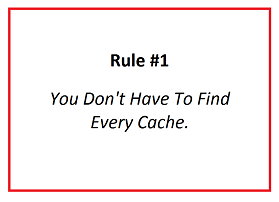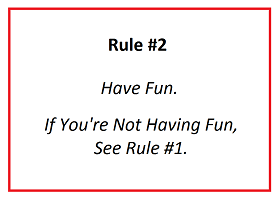This is a remake of How Do I Solve These #@&% Puzzles?!! Number Bases. The location of the original cache became inaccessible, so I had to move it. Some images were updated for clarification.
Many puzzles are based on math concepts. It isn't my intention to provide an extensive course in math, but I'll try to help explain a few basic concepts I commonly see in geocaching puzzles.
One technique I've seen used in many caching puzzles is the use of numbers in different bases (for example, binary). I like to think of numbers in different bases as like being in different "languages" - they mean the same thing, they just look different.

There's a very easy way to convert numbers to binary and other bases, but it's an important concept that I first want to explain. Understanding this concept (as opposed to just blindly jumping into a conversion table) might better help you with some puzzles.
Imagine if you lived back in caveman times and wanted to tell your chief about some horses you saw.
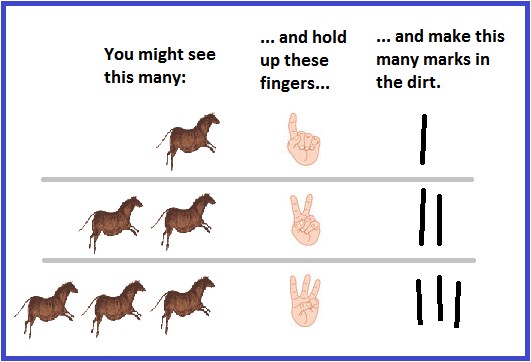
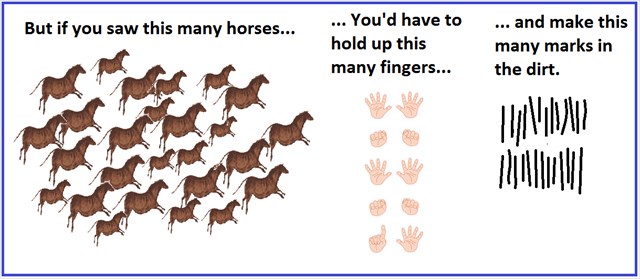
... And that's a bit cumbersome. By the time you finish with that all the horses may have run away. So we developed a system of symbols that is more efficient.
We have 10 fingers, so we evolved a positional number system based on 10 digits (0 through 9) and we call it Base 10 (also known as Decimal). "Positional number system" means the position of the numbers matters. This doesn't really mean anything:

This means something: 123, which has a different meaning from 321 So, using our Base 10 system:

Here's another way to think of it:
Think of how an odometer works. The wheel on the right clicks from 0 to 9, and then as it continues to rotate, it turns again to 0 while the wheel next to it (the "tens") clicks to 1, signifying that you have one set of tens.
When you get ten sets of tens, the next wheel to the left clicks to 1 signifying that you have one set of hundreds. When you get ten sets of hundreds, the next wheel to the left clicks to 1 signifying that you have one set of thousands. And so on, each place to the left being ten times the number of sets to its right.

But imagine if you lived in Cartoon world, where everyone only has 8 fingers. Your world would probably have developed a number system using only 8 digits (from 0 through 7), and would call it Base 8. This is how you would count those same horses using Base 8:

With a Base 8 odometer, the wheels click over each 8 units. The wheel on the right clicks from 0 to 7, and then as it continues to rotate, it turns again to 0 while the wheel next to it (the "eights") clicks to 1, signifying that you have one set of eights. When you get eight sets of eights, you have one set of 64. When you get eight sets of 64, you have one set of 512, and so on.

Base 8 is also known as Octal, and is often used in computer applications.
Base 2 (also called Binary) is the basis of computer operations. The only digits it uses are 1 and 0. On its odometer, the wheel on the right clicks from 0 to 1, and as it continues to rotate it turns again to 0 while the the wheel next to it clicks to 1. It's odometer looks like this:
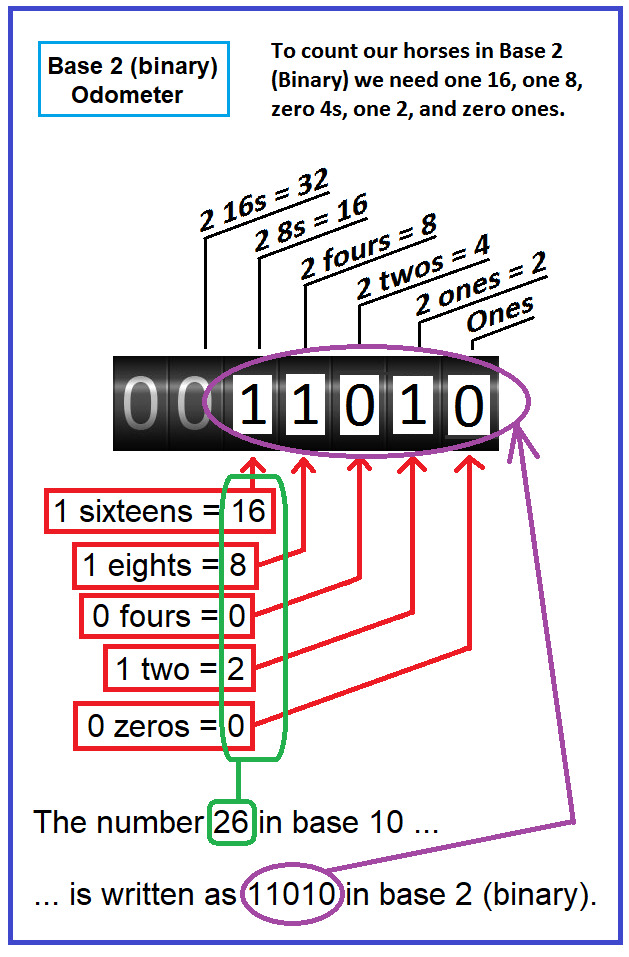
This is a good time to take a short break for a nerdy joke:
There are 10 types of people in the world: Those who understand binary and those who don't.
Ha Ha! Do you get it? See, if you convert 10 from binary you get ... oh never mind. Enough levity. Back to the lesson...
This is how the odometers for Bases 5 and 4 would look:
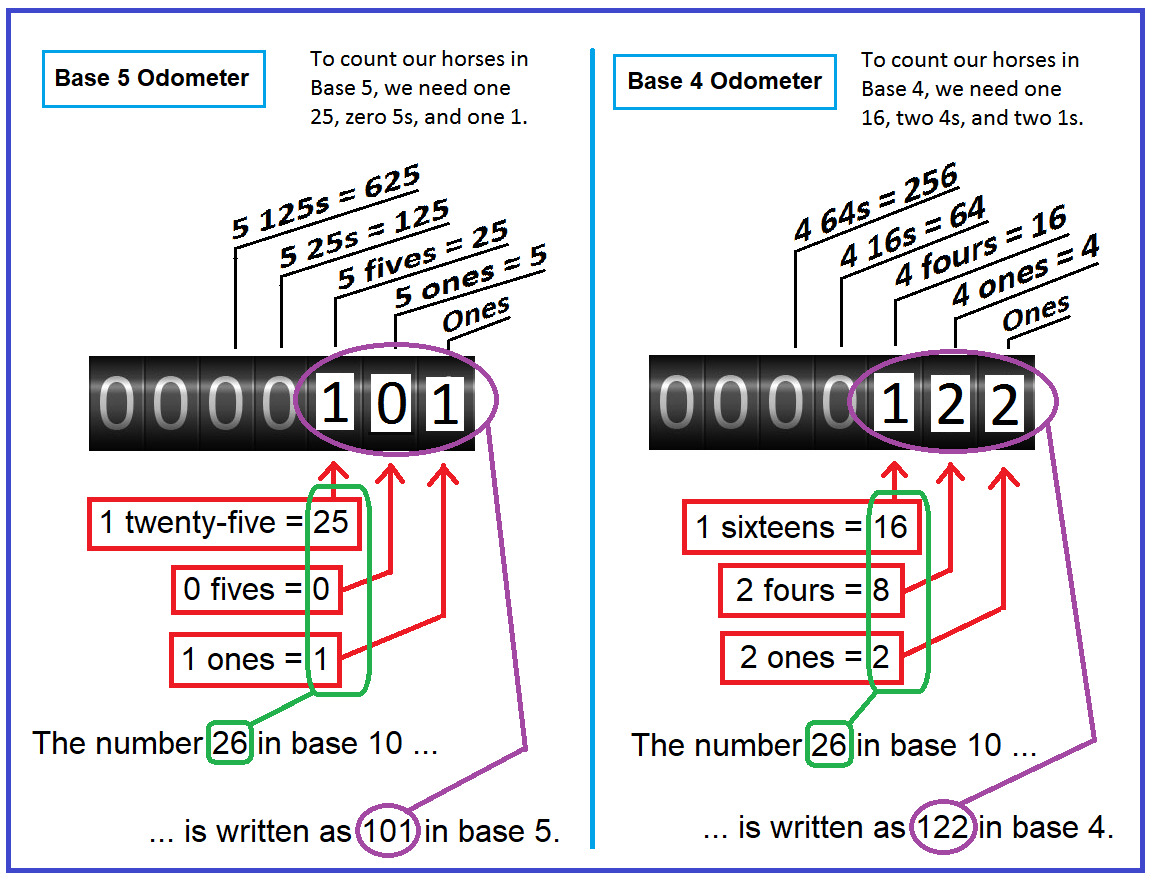
Base 16 (also called Hexidecimal or Hex) is another base often used in computer applications (for example, hex codes are used to represent colors on a screen). With Hex, we need 16 digits, so we use the numbers from 0 thru 9 plus the letters A B C D E F.
"That's crazy!", you might say. "Those are letters, not numbers!" Remember, the numbers 0 thru 9 are really just squiggly lines that we've grown to associate with quantities.

So with Hex, we don't associate, for example, A with the "ah" sound. We associate it with a quantity that's one more than nine.
If you would like this explained in another way, this website has a series of videos that nicely explain number systems and bases. Here's the first: Introduction to Number Systems and Binary
There's an easy way to convert numbers to different bases: do an internet search for a conversion table. There are many, but I especially like this one:
The Number Base Calculator
You can enter a number in any window and see how in converts to the other shown bases. When working on a puzzle that I think might involve another base, I enter 45 or 122 (or maybe numbers that I might need for the minutes of my coordinates) into the Base 10 window, click the "Calculate it" button, and see if any of the resulting conversions look like anything I'm getting out of the puzzle.
Note: if you have "numbers" that include letters, you may be dealing with a base that is higher than 10. If your numbers consist of, say, only the digits 0 1 2 3, you MIGHT be dealing with base 4 (although it could also be any of the higher bases); it certainly won't be base 3 or 2 because neither of those use the digit 3.
Here's another converter I love to use for converting long strings of binary (and other) numbers. I can copy a block of binary from a page and paste it into the BINARY box, click the "DECODE" box below it, and hopefully easily read the text in the TEXT box at the top. Translator, Binary (and others)
Update Aug. 16, '17: This link was working the other day when I prepared this, but the website is down. I'll give it a few days to see if it comes back up. If not, I'll find another link to put here. In the meantime, you can Google "binary converter" and find another one to use.
Try it with this example: (If you're not sure how to do a copy and paste with all that, check out my Handy Computer Shortcuts I Use a Lot
01010111 01100101 01101100 01101100 00100000 01100100 01101111 01101110 01100101 00100001 00100000 00100000 01011001 01101111 01110101 00100000 01110011 01100101 01100101 00100000 01101000 01101111 01110111 00100000 01100101 01100001 01110011 01111001 00100000 01101001 01110100 00100000 01100011 01100001 01101110 00100000 01100010 01100101 00100000 01110100 01101111 00100000 01100100 01100101 01100011 01101111 01100100 01100101 00100000 01100001 00100000 01010110 01000101 01010010 01011001 00100000 01101100 01101111 01101110 01100111 00100000 01110011 01110100 01110010 01101001 01101110 01100111 00100000 01101111 01100110 00100000 01100010 01101001 01101110 01100001 01110010 01111001 00100000 01100010 01111001 00100000 01110101 01110011 01101001 01101110 01100111 00100000 01110100 01101000 01101001 01110011 00100000 01101110 01101001 01100110 01110100 01111001 00100000 01110100 01110010 01100001 01101110 01110011 01101100 01100001 01110100 01101111 01110010 00101110 00100000 00100000
If you try that with another puzzle and it doesn't work (that is, you get gibberish), then there may be something else going on with the puzzle. I'll cover more techniques of "what to do if you're not getting it" later in this series.
ASCII (American Standard Code for Information Interchange) is a computer code used to translate from the binary zeros and ones used by computers into characters we can read (say, on a computer screen or printout), such as capital and lower case letters, punctuation, symbols (such as #@&%$) and control characters (spaces and carriage returns). It was originally developed in the 1960s for use on teletype machines.
These codes are sometimes used in puzzles. You can do an internet search for "ASCII tables"; here is one I like: ASCII Code - The Extended ASCII Table
Here is the puzzle you must solve for this cache:
I caught a gnome in my garden the other day. He pleaded for his freedom, saying he would tell me where he hid his treasure if I would let him go. I agreed, and he scribbled these numbers on a piece of paper before vanishing into the brush.
55 43 253 172 64 555
But I fear he has tricked me. These numbers don't make any sense.
Here's a picture of him I drew. Can you help me find either this trickster or his treasure?
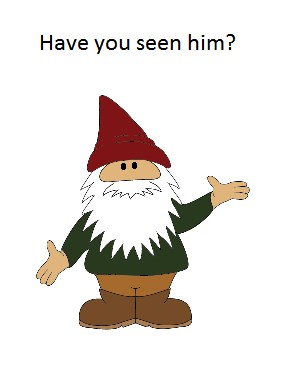

Here is a cache that goes even further into some math concepts:
GCYXZ5 - Puzzle Solving 101 - Lesson 5: Mathematics
It is one in a well known series of Florida caches aimed to help people solve puzzles.
As I said, this is one of a series of "How Do I Solve..." caches. They are spread out in different neighborhoods. It might help to solve them in order, but you don't need to. I tried to make these easy to understand, but if you have any questions about them, please ask.
Here are all the caches in the series. They are also posted in a "How Do I Solve These #@&%$ Puzzle Caches?!!" bookmark list.
This series of #@&%$ Puzzles contains the following caches:
Note for Remote Solvers: You have a chance to earn a “I Solved Those #@&% Puzzles” virtual badge to display proudly on your profile page. After you’ve solved the first 15 puzzles in the series, send me your solutions and I’ll send you the info for the badge.
Local solvers earn a “I Solved and Found Those #@&% Puzzles” Badge after finding the Bonus Graduation cache.
Have fun solving puzzle caches! And remember ...
